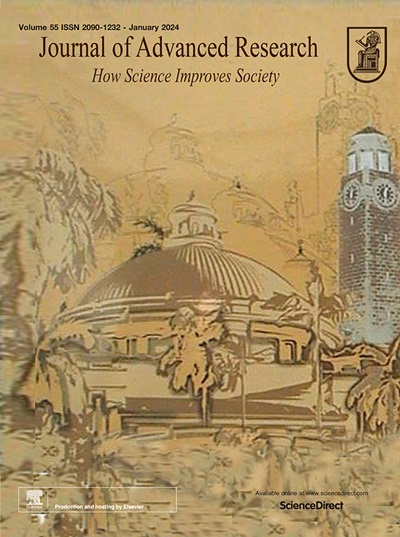Root-derived low molecular weight organic acids modulate keystone microbial taxa impacting plant phosphorus acquisition
IF 11.4
1区 综合性期刊
Q1 MULTIDISCIPLINARY SCIENCES
引用次数: 0
Abstract
Introduction
Low-molecular-weight organic acids (LMWOAs) present in root exudates modulate the assembly and function of phosphorus (P)-mobilizing bacteria in the rhizosphere. Nonetheless, relatively little is known about how specific LMWOAs affect the structure of rhizosphere microbes associated with P cycling.Objectives
This study aimed to elucidate the mechanisms by which LMWOAs affect the recruitment of P-mobilizing bacterial communities, with implications for P bioavailability and plant P uptake.Methods
The pqqC and phoD bacterial genes, along with root-derived LMWOAs, were profiled using amplicon sequencing and non-targeted metabolomics. The mechanisms underlying the stimulation of P-mobilizing bacteria for soil P mobilization and plant P uptake were investigated through in vitro and pot experiments, complemented by transcriptomics and proteomics.Results
Field data indicated that manure amendment increased the soil labile-P fraction and P bioavailability. Additionally, it was observed that root-derived aliphatic and aromatic LMWOAs modulated the structure, diversity, and abundance of pqqC and phoD genes, correlating with the expression levels of phosphate transporters and acid phosphatases in maize roots. In vitro and pot experiments validated the effects of 2-hydroxycinnamic, syringic, isoferulic, and alpha-ketoglutaric acids on the keystone bacteria (Burkholderia, Pseudomonas, Mesorhizobium, and Sinorhizobium). These molecules enhanced the diversity and abundance of pqqC and phoD genes, affecting maize root morphology, plant gene expression, and protein synthesis.Conclusion
This study elucidated the intricate interactions between maize root exudates and P-mobilizing bacteria. The results provide new avenues for exploring root-derived LMWOAs as signaling molecules to optimize synthetic biological strategies for sustainable agriculture.

根源性低分子量有机酸调节影响植物磷获取的关键微生物类群
根分泌物中存在的低分子量有机酸(LMWOAs)调节根际磷动员菌的组装和功能。然而,对于特异性LMWOAs如何影响与磷循环相关的根际微生物结构,人们知之甚少。目的研究低分子woas影响磷动员菌群募集的机制,以及对植物磷的生物利用度和吸收的影响。方法采用扩增子测序和非靶向代谢组学对细菌pqqC和phoD基因以及根源LMWOAs进行分析。通过体外和盆栽试验,结合转录组学和蛋白质组学研究了磷动员菌促进土壤磷动员和植物磷吸收的机制。结果田间数据表明,施用有机肥可提高土壤活性磷含量和磷的生物有效性。此外,研究还发现,根源性脂肪族和芳香族LMWOAs可以调节pqqC和phoD基因的结构、多样性和丰度,并与玉米根中磷酸转运蛋白和酸性磷酸酶的表达水平相关。体外和盆栽实验验证了2-羟基肉桂酸、丁香酸、异戊酸和α -酮戊二酸对关键菌(伯克霍尔德菌、假单胞菌、中根瘤菌和中根瘤菌)的影响。这些分子增强了pqqC和phoD基因的多样性和丰度,影响玉米根系形态、植物基因表达和蛋白质合成。结论本研究揭示了玉米根系分泌物与磷动员菌之间复杂的相互作用。研究结果为探索根源LMWOAs作为信号分子,优化可持续农业的合成生物学策略提供了新的途径。
本文章由计算机程序翻译,如有差异,请以英文原文为准。
求助全文
约1分钟内获得全文
求助全文
来源期刊

Journal of Advanced Research
Multidisciplinary-Multidisciplinary
CiteScore
21.60
自引率
0.90%
发文量
280
审稿时长
12 weeks
期刊介绍:
Journal of Advanced Research (J. Adv. Res.) is an applied/natural sciences, peer-reviewed journal that focuses on interdisciplinary research. The journal aims to contribute to applied research and knowledge worldwide through the publication of original and high-quality research articles in the fields of Medicine, Pharmaceutical Sciences, Dentistry, Physical Therapy, Veterinary Medicine, and Basic and Biological Sciences.
The following abstracting and indexing services cover the Journal of Advanced Research: PubMed/Medline, Essential Science Indicators, Web of Science, Scopus, PubMed Central, PubMed, Science Citation Index Expanded, Directory of Open Access Journals (DOAJ), and INSPEC.
 求助内容:
求助内容: 应助结果提醒方式:
应助结果提醒方式:


